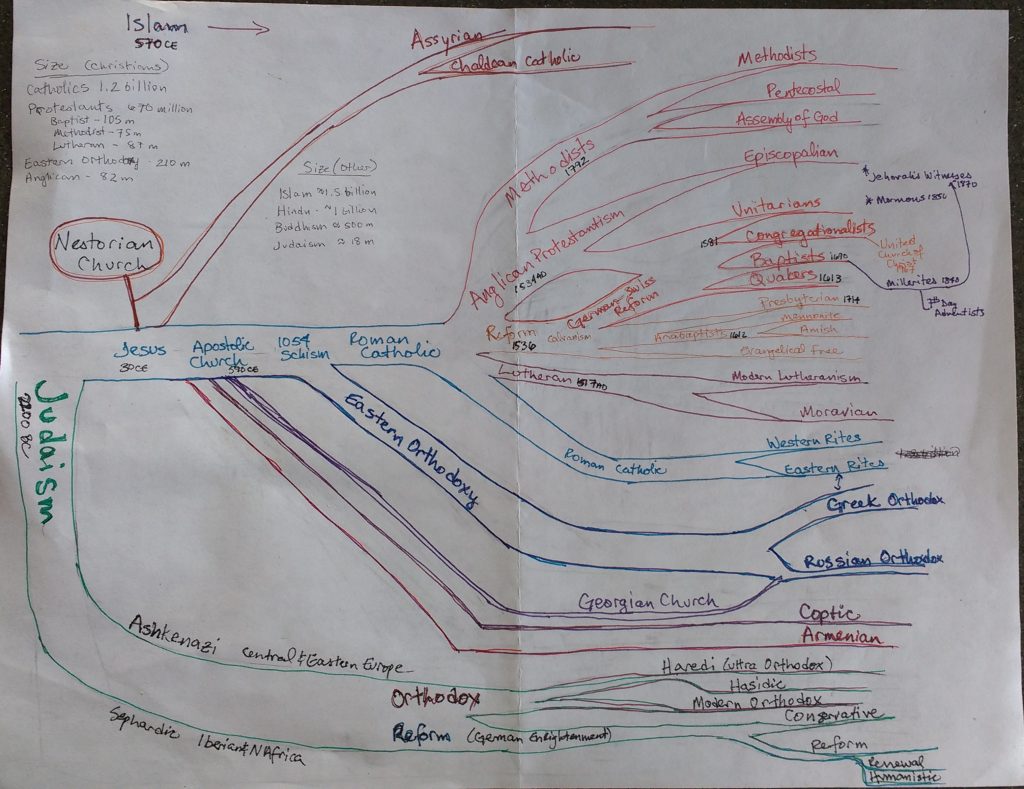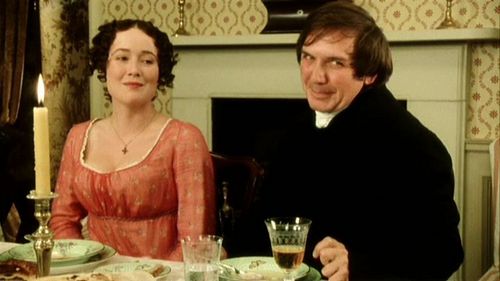As I was reading A Room With A View, which contrasts a close-minded clergyman (Mr. Eager) with an open-minded one (Mr. Beebe), it occurred to me that every book I’ve read so far has had clergymen as characters and I began mentally reviewing clergy in historical romance.
In Pamela, we have Mr. Williams, the hapless young reverend who tries to help Pamela escape, but is foiled by his financial dependence on Mr. B. Pride and Prejudice features both Wickham, who was meant to be in the position of Mr. Williams to Mr. Darcy, and Mr. Collins. Jane Eyre nearly marries her ascetic cousin Saint John, who is leaving his position as small town clergy to become a missionary. Mary Johnston gave her hero Jeremy Sparrow, a warrior-priest as his faithful sidekick in To Have and To Hold. A Room With A View, as mentioned above, has Mr. Eager and Mr. Beebe.
When I think about the books I’ve read from Julia Quinn, Lisa Kleypas, Eloisa James, Courtney Milan, Meredith Duran, Maya Rodale… I can’t recall a single clergyman. I have a vague sense that there are some religious characters in Elizabeth Hoyt’s Maiden Lane series, but I’ve only read the first one. And really, there are a great many books I haven’t read. There is a high probability that this gap around clergy characters is an artifact of my reading choices, but I still started thinking about reasons why authors of the late twentieth and early twenty-first century would leave out the clergy.
Reasons for a lack of clergy in historical romance
Secularization of Society
While Christianity has been a major part of the lives of Western Europeans for the last millennia or two, Western society has gradually become more secular and, as I interpret this article in The Atlantic on church attendance, less institutional about religion. It seems like a natural result of Protestantism: let people read the Bible for themselves and eventually they don’t need/want an organized religious institution to tell them what it says and means. American individualism mistrusts authority, and clergy as authority figures falls out of fashion.
Associations of Christian morality and abstinence
As a secular American adult, my first association between Christianity and romance is the conservative focus on Christian morality and abstinence. As romance novels have gotten steamier, perhaps the inclusion of characters who would disapprove of sex for pleasure rather than procreation has proportionally fallen.
Both secularization and the opposition of sexuality and morality seem like compelling reasons, but ultimately I think that’s only part of the story: the part that’s most obvious to me in my little liberal and sexually-liberated reading and thinking space. Trying to think a little wider, it occurred to me that the answer probably lies in…
Genre Proliferation, Specialization, and Segregation
The novels I’ve read so far were all written by white, Anglo-Saxon Protestants who were living in a majority WASP society and writing for a WASP audience. While minorities existed — see the many many examples collected by medievalpoc on tumblr — they aren’t acknowledged in the novels that I’ve read so far. Well, I guess To Have and To Hold featured some conflict between English Protestants and Spanish/Italian Catholics, but that’s still a majority Caucasian priesthood. For Austen to include Protestant clergy in her stories was a no-brainer. The British reading public of the time was small and relatively homogeneous: everyone who read her books would likely have gone to a Protestant church or been familiar with one by dint of living in England. But religious ideas have a funny way of diverging as time passes and in the 21st century the “Protestant” umbrella might include Baptists, Anabaptists, Seventh Day Adventists, Lutherans, Presbyterians, Methodists, Quakers, Shakers, Amish, etc, etc, etc.
I once tried to map out the permutations of the Abrahamaic religions. It’s very confusing.

Similarly, the romance genre has split, and diverged and specialized. If you want vampires, you can read vampires. If you want Westerns, you can read Westerns. If you want pirates or harems or spaceships, or space pirate harems… you get the idea. And, of course, if you want religious characters, there are Amish romances and Inspirational romances.
It’s not that there aren’t romances with clergy out there, it’s just that they are no longer a stock character in the Regencies stories I’ve been reading. RWA has a subgroup called Faith-Hope-Love which specializes in Christian romance. Heroes and Heartbreakers had a post on vicars in romance novels in 2013, and the Smart Bitches podcast has discussed clergy in romance a couple times: see episodes 119 and 124.



